Boeing Australia and the Royal Australian Air Force have successfully completed the first test flight of the Loyal Wingman uncrewed aircraft.
According to a news release from the firm, the flight of the first military aircraft to be designed and manufactured in Australia in more than 50 years flew under the supervision of a Boeing test pilot monitoring the aircraft from a ground control station at the Woomera Range Complex.
The aircraft will fly alongside other platforms, using artificial intelligence and other systems to augment crewed aircraft.
“The Loyal Wingman’s first flight is a major step in this long-term, significant project for the Air Force and Boeing Australia, and we’re thrilled to be a part of the successful test,” said Air Vice-Marshal Cath Roberts, RAAF Head of Air Force Capability.
“The Loyal Wingman project is a pathfinder for the integration of autonomous systems and artificial intelligence to create smart human-machine teams. Through this project we are learning how to integrate these new capabilities to complement and extend air combat and other missions,” she said.
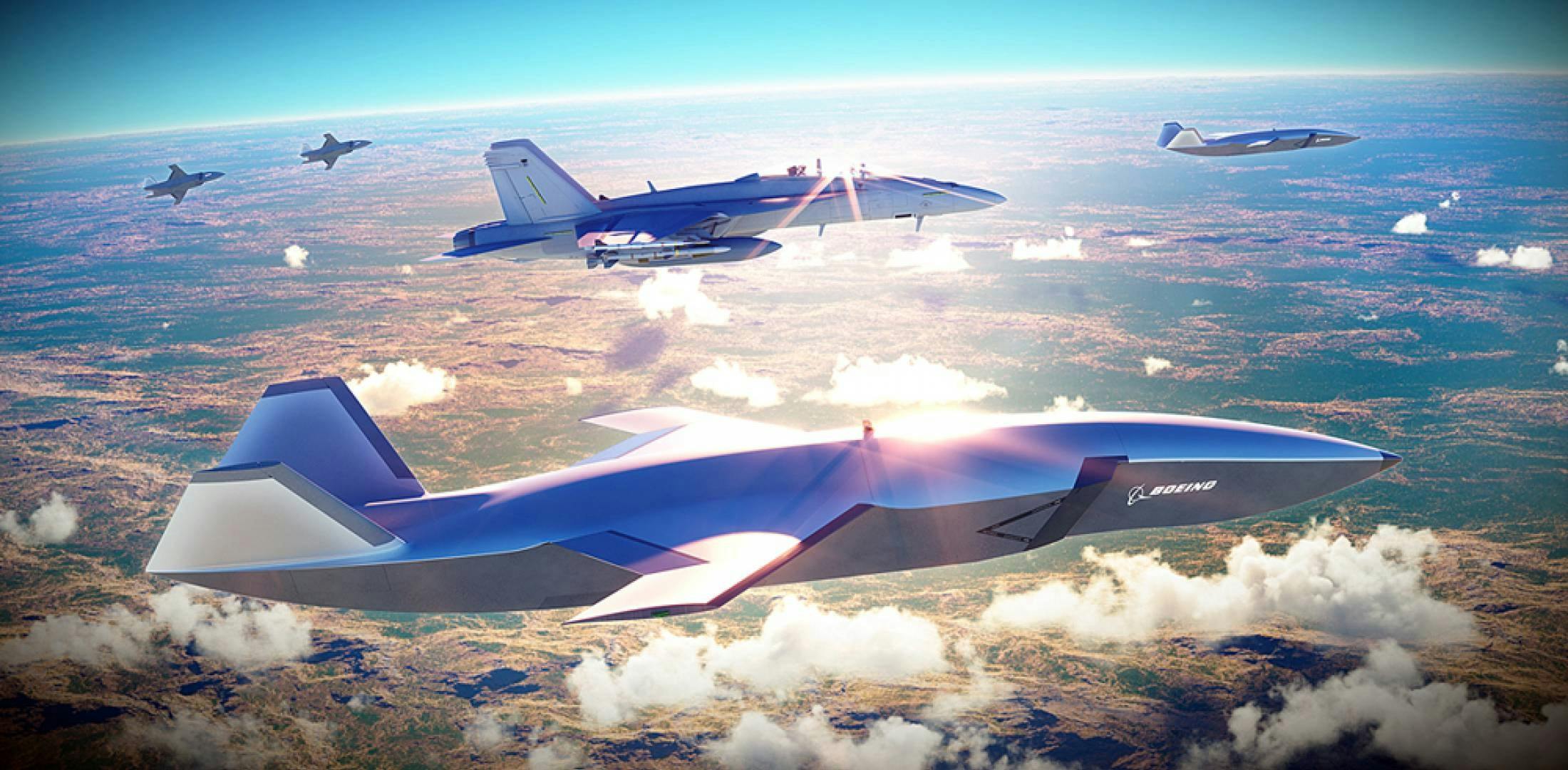
Following a series of taxi tests validating ground handling, navigation and control, and pilot interface, the aircraft completed a successful take-off under its own power before flying a pre-determined route at different speeds and altitudes to verify flight functionality and demonstrate the performance of the Airpower Teaming System design.
This first Loyal Wingman aircraft is serving as the foundation for the Boeing Airpower Teaming System being developed for various global defence customers.
Additional Loyal Wingman aircraft are currently under development, with plans for teaming flights scheduled for later this year say Boeing here.


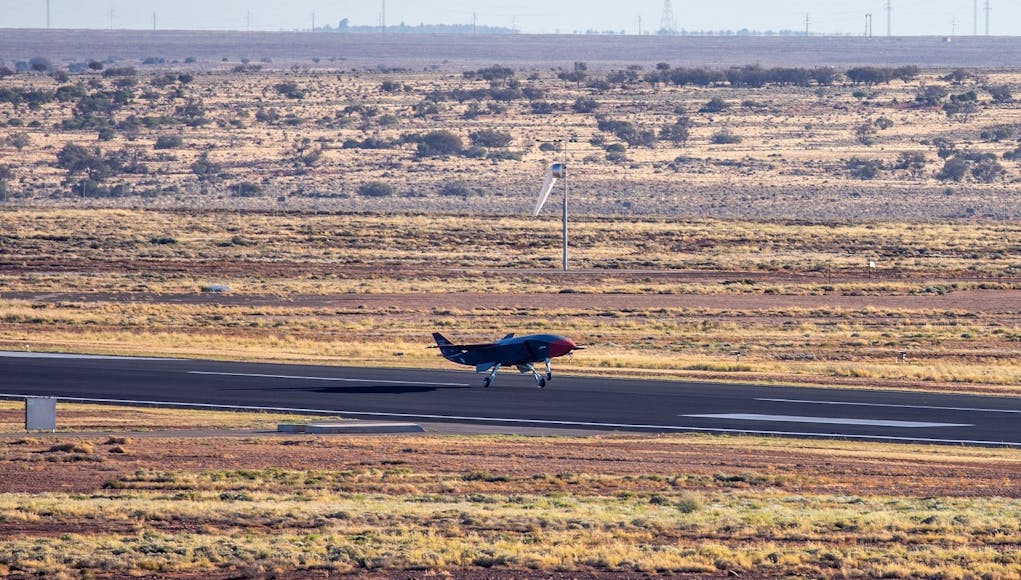

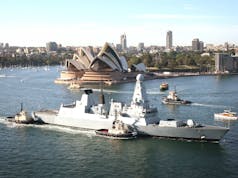
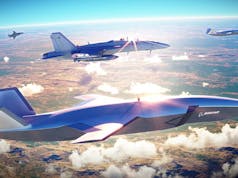
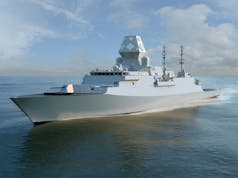
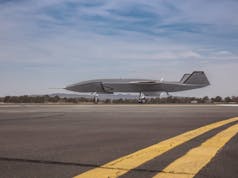
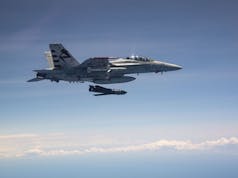



Here’s a longer video released by the RAAF:
https://m.youtube.com/watch?v=tN6bw35nzSQ
The aircraft had it’s maiden flight last Saturday, 28th February 2021, just a few days ago. It was only two years ago at the 2019 Avalon Airshow that the project was announced.
The Federal Government here in Oz also announced additional funding for another three prototypes bringing the test fleet to six (6) airframes.
Congratulations to the RAAF, Boeing Australia, BAE Systems Australia and the 35+ other Australian companies involved in the Loyal Wingman program.
Cheers,
Amazing stuff. RAAF pulling ahead of the RAF?
Weve done trials with AI controlled swarms where the AI flys the drones, selects the formations and which aircraft to use for which role based on their equipment.
Whats novel about the Boeing Australia program is theyve developed an airframe at the same time as an AI pilot, everyone else has just married an AI to an existing aircraft.
I’d draw a parallel to building electric vehicles and then having those vehicles be fully autonomous. Much easier to do the former, than the latter which no one has achieved to date. Regarding UAVs, many countries are demonstrating a capability to develop and fly UAVs, even relatively large platforms, its much tougher to make them autonomous UCAV loyal wingmen, and that’s a sliding scale of difficulty, based on what it needs to do autonomously.
To put it in perspective, Taranis first flew in 2013, Mantis in 2009, Herti and Corax in 2004 and of course there’s been Predator and Reaper manually controlled systems for two and half decades. Flying a platform is not the hard part unless it includes more radical design, such as blown air flight control in the Magma experimentation. Its taking the human out of the loop AND delivering a viable and useful capability that makes it all worthwhile that’s challenging. Development of autonomous software management, under all conditions, is by far the hardest part. Actually F-35 shows the platform doesn’t even have to be autonomous for software to be a major challenge.
Today we have all sorts of experimentation around different sizes, capabilities and costs of UAVs, as countries figure out what they want and what is achievable from these platforms at different price points. Its not clear that anyone is winning or losing at this time.
We flew BAE Taranis years ago. Arguably more advanced than Loyal Wingman. Like others have said, UK has also conducted numerous swarming AI trials.
At this stage, Australia is ahead in the build process but likely not ahead in terms of knowledge and experience.
In regard to “knowledge and experience” the project is being co-developed by the RAAF, Boeing Australia, BAE Systems Australia and 35+ Australian companies.
Boeing and BAE Systems would no doubt have access to the “corporate knowledge” of their parent companies, if and when necessary.
Yes it’s a young and immature program, no doubt about that, but it may well be more advanced than it’s given credit for.
Cheers,
Taranis was impressive and showed what an small stealthy craft with the minimum of instruction was capable of , but then the English just went home! Boeing has a lot to do with the Oz and “just like that” promised a Claytons Taranis .
The UK loyal wingman system is called Mosquito – Spirit (formerly Bombadier) are developing protoype with Northrop Grumman in Belfast. https://www.janes.com/defence-news/news-detail/uk-awards-gbp30-million-mosquito-loyal-wingman-contract
Taranis first flight at the Woomera Range on the 10 August 2013
How time flies!
https://www.youtube.com/watch?v=O8CTi4HR6wQ
Now combine these two technologies and you have a wold leading UAV!
Magma.
https://www.youtube.com/watch?v=okAC069Cahw
Boeing is using Loyal Wingman as its contender for the US Skyborg program.
Thats a requirement to deliver an off the shelf partially-autonomous drone within six months thats cheap enough to be disposable (The US will provide each contender the autonomy module and weapons loadouts). Theyve also set up a $400m program where 13 vendors are tasked to provide interchangeable weapons, sensors and software modules allowing the drone to perform multiple different roles (e.g. recon, scouting, bombing, air defence) just through changing its loadout.
The UK appears to be taking a different approach, with a much more sophisticated ucav with the full suite of sensors and multi mission capable, including Air to Air.
So very expensive and certainly not disposable!
Do we know that though? So far we have Lightweight Affordable Novel Combat Aircraft (LANCA) and we have an optionally manned Tempest platform. The latter is likely to be relatively expensive, the former seems rather less likely. Especially because Spirit AeroSystems seems to be expected to deliver a technology demonstrator as a precursor to LANCA for just £30 million.
https://ukdefencejournal.org.uk/britain-to-get-air-combat-drones-to-fly-alongside-fighters/
And then there’s the Aeralis relationship which might be more about helping achieve future low cost UAV platforms, than it might be for a trainer or other manned platform.
https://ukdefencejournal.org.uk/aeralis-chosen-by-raf-to-develop-advanced-modular-aircraft/
I might have misunderstood, but I thought the operational ucav following on from the demonstrator was supposed to be a fully capable asset, if that’s right, then it will be far from cheap.
True Air to Air capability alone, suggests a very capable asset indeed, supersonic dash, highly manoeuvrable and high and low altitude performance.
Not to mention a fully integrated suite of advanced avionics and sensors.
Recent news even suggest they are at least, considering it being built as carrier capable…
Now if such a beast was teamed up with a large manned Tempest fighter and flown off our carriers to work alongside F35B’s, then we will have a potential world beating force…
It probably depends on what we define “fully capable” and “cheap” to be, with a strong relationship between the two.
For example, air-to-air capability might simply mean firing a Meteor, it wouldn’t mean dog-fighting in the classic sense, even Tempest may not do that. High manoeuverability is a debatable benefit for future air warfare when targeted by missiles, that even today, have 50G+ manoeuvre capability. Countermeasures, or just not being “observed” in the first place, or observed early enough, may be the better solution.
Does it need supersonic capability? Super-cruise? Or is high sub-sonic all that’s required? Does high altitude give an advantage versus just low altitude combined with all aspect stealth/low observability?
Does the UAV platform need a fully integrated suite of advanced avionics and sensors, or just robust communications to a platform that does, such as Tempest or F-35? Even if the platform includes sensors, does it need all of them, does it need a full suite of defensive aids or any at all? Might a number of UAV platforms share sensor and comms between them?
Excellent points, I would say to be a truly capable Air to Air platform, it requires supersonic sprint (perhaps not sustained necessarily) ‘at altitude’ performance and agility to ‘lob’ the missiles at their optimal performance envolope in the right direction rapidly.
The above costs serious money however
(The Australian Loyal Wingman is more of a subsonic bomb and guided missile truck I believe), as ever, it will be a balance of capability and cost I suppose….
Its going to be interesting to see where the different programs around the world settle wrt to capabilities of higher level UCAV platforms. As a ball park and choosing some arbitrary numbers in today’s money, attritable platforms will be anything up to $5M (based on what high end missiles like LRASM and SM-6 cost) and perhaps even as high as $10M each, while “affordable” platforms (versus a manned jet) may be up to $30M.
I’m wondering if we might just see tempest flying from the carriers as well as a UAV/Taranis after reading this?
“02 MARCH 2021
UK issues RFI for shipborne aircraft launch and recovery equipment
by Richard Scott
Almost a decade after dropping plans to introduce catapults and arrestor gear on one of the Queen Elizabeth-class aircraft carriers, the UK Ministry of Defence (MoD) is seeking to be appraised on shipborne assisted launch and arrested recovery systems applicable to both crewed and uncrewed air vehicles.”
https://www.janes.com/defence-news/news-detail/uk-issues-rfi-for-shipborne-aircraft-launch-and-recovery-equipment
The specified weights are a bit low for an aircraft like Tempest. But right in the ballpark for an UAV like the MQ25 Stingray.
Note the part which mentions adaptable airframe.
I think it’s a little bit early to rule anything in or out at this stage, particularly when you see “both crewed and uncrewed”!
“BAE Systems has highlighted a number of vital attributes that any future fighter is likely to feature, including a flexible payload, an adaptable airframe, long-range sensing, advanced materials, laser directed-energy weapons, intelligent maintenance, cyber protection, manned-unmanned taming (MUM-T), and a future cockpit.”
https://www.uasvision.com/2019/02/19/uk-tempests-unmanned-loyal-wingmen-to-be-carrier-capable/
The link does have a couple of interesting statements:
“the concept currently being considered is that the UAV ‘loyal wingmen’ will be ship-based rather than the fighter itself.”
“The UK approach to its [Tempest] Future Combat Air System is for it to be fully aligned with carrier strike”.
Those two statements imply a lot. The RAF have already stated that the F35B will be expected to operate with a “loyal wingman”. So it can be assumed that this will also be the plan when operating from the carriers.
But it’s the second part, that states Tempest is to be fully aligned with carrier strike, what does that actually mean? Are they talking about the Tempest aircraft being able to operate from a carrier or are they talking about the overarching Tempest system, which includes the LANCA “loyal wingman” UAVs?
Either way the MoD’s RFI states that they are looking for a electrical launch capability of 55,000lbs (24,949kg) with a recovery weight of 47,000lbs (21,318kg). The Typhoon has a max take-off weight of 51,809lbs (23,500kg). The Tempest by all accounts is a bigger aircraft, closer in size to a F22 which has a max take-off weight of 83,000lbs (38,000kg), or possibly the larger YF23. This is above the current RFI requirements, unless they will be launching at minimum fuel loads but full weapons loads, then topping up by aerial refueling.
I still have the feeling the the MoD/RN are looking at the LANCA UAV to begin with, but have their eye on the MQ25 UAV type of aircraft for a tanker/ISTAR role, as this matches the RFI specification. At some point in the future, when there’s funding available, I’m certain they will look at increasing the launch weights, as it gives them more options.
A future interesting question would be if the USMC are embarked on the carrier, will they be allowed to use our loyal wingmen?
All valid points of course. It was the adaptable airframe that got me thinking along the lines of a “Tempest Lite” for the carriers and the mention of crewed as well.
I think the defence review will shed some light on which way we will be heading in the future, investing in Tempest/Loyal Wingman, or increasing the numbers of our F35’s.
I would agree Davey, it’s the loyal wingman aspect of project Tempest, that is being considered for duel Land/ carrier strike role.
If this can be achieved without breaking the bank, then it seems like an excellent idea.
We can dare to dream that future RAF strike could be something really special, with a large manned Tempest ( F22 sized) strike aircraft, capable of 1000 mile Roa, with a large internal mission bay and really advanced electronic attack features.
Coupled to this, advanced Tempest UCAS systems and lower end swarming UAVs
At sea we will have advanced block 4 (or above) F35B, the QE class modified to cats and traps with AEW/AAR drones ( off the shelf solutions perhaps) and the Tempest UCAV.
It’s a potentially bright future guys….
45,000 lbs – that is exactly the same at F-35B
Davey has provided the counter points against a manned Tempest platform for carrier use, which I agree with, although the RFI doesn’t exclude an option to consider higher launch loads at a later date. The RFI could just be a spec of the minimum required to make it even worth considering.
However, I also agree with Davey that based on what the RFI currently states, it seems to be targeted towards loyal wingman, along with AEW and AAR, as the most likely candidates, perhaps all based off the same airframe, using concepts similar to those Aeralis is advancing for different engine or wing options. The RFI spec would also seem to support using platforms like MQ-25A and E-2D as insurance.
Of course we should also recognise that there may be practical as well as financial issues as to why integrating a launch and recovery system may not viable.
I wonder which way the USA intends to go?
“The United States may field a new fighter aircraft type by fiscal year (FY) 2029, according to a related contract notification posted on 4 March.
This contract will provide the necessary aircraft lab, flight test, flight clearance, and simulation support during all integration requirements in AMRAAM for F-15, F-16, F/A-18, F-22, F-35, and other current inventory or next-generation platforms that may join the air force or navy inventory before the end of fiscal year 2029,” the Department of Defense (DoD) said in its contract notification.”
https://www.janes.com/defence-news/news-detail/us-may-field-new-fighter-by-fy-2029
£30 is the lastest funding tranche – its broken into phases. UK approach is for more smaller swarming and disposable platforms. This also reduces R&D costs for each platform, although you need to buy more of them. Spirit are developing the airframe – a lot more to come.
The relatively fast development times suggests it is pretty basic and should be cheap. A big plus in my opinion. I am not sure what the final cost of these aircraft will be but I wouldn’t be surprised if you could build a squadron of them for the price of a single F-35.
You’ve got to look at the Loyal Wingman program from a couple of different angles.
The air vehicle itself is supposed to be relatively cheap, probably in the millions and not tens of millions, to produce (commercial off the shelf tech).
The different types of payloads is likely to be where costs will add to the basic air vehicle, the nose of the air vehicle can be swapped out for other noses, a whole range of different payloads is planned.
The big early cost is most likely in software and AI development, get that right and I’d imagine that a whole range of larger more complex air vehicles could easily be produced, download the software and away you go.
Cheers,
Spot on John , it will be George the Autonomous Pilot where the Dollars will flow in vast unimaginable swarms , but Boeing has had George flying within an artificial world that in real time equates to years , he’s going to be taking this thing places no organic creature could follow .
Agree, and apart from the virtual world and the first flight of the prototype a few days ago, the ‘teaming’ tech has already flown:
https://m.youtube.com/watch?v=LYwbLb8QHpg
Part of testing has also included five scale model jets to test the technology.
Hopefully later this year we get to see a few of the ‘full size’ jets operating together too.
Cheers,
For decades Australia’s defence has been predicated on controlling the air sea gap between Australia and everybody else through technological superiority of assets. With the rise of China, and its air forces’ increasing technological sophistication, that approach is under strain. The ADF’s current approach is to put its faith in a highly networked force structure. The Loyal Wingman project is part of that approach. The project cost per unit is AU$2 million, so the RAAF can buy 40 Loyal Wingman instead of one F35. This gives the RAAF something they have always lacked – quantity. It doesn’t matter if they’re not sophisticated. If they can close with the enemy, half survive and the rest launch AAM’s guided by other networked assets, then it will leave a lot less of the enemy air forces for the following F35’s and Super Hornets to clean up.
They’re also intended to act as a protective screen for major assets such as tankers and AEW.